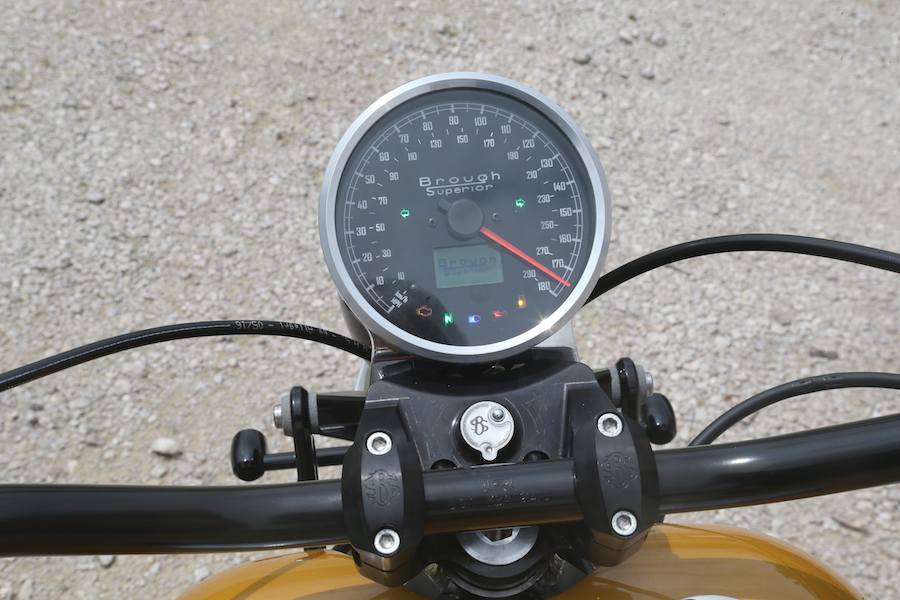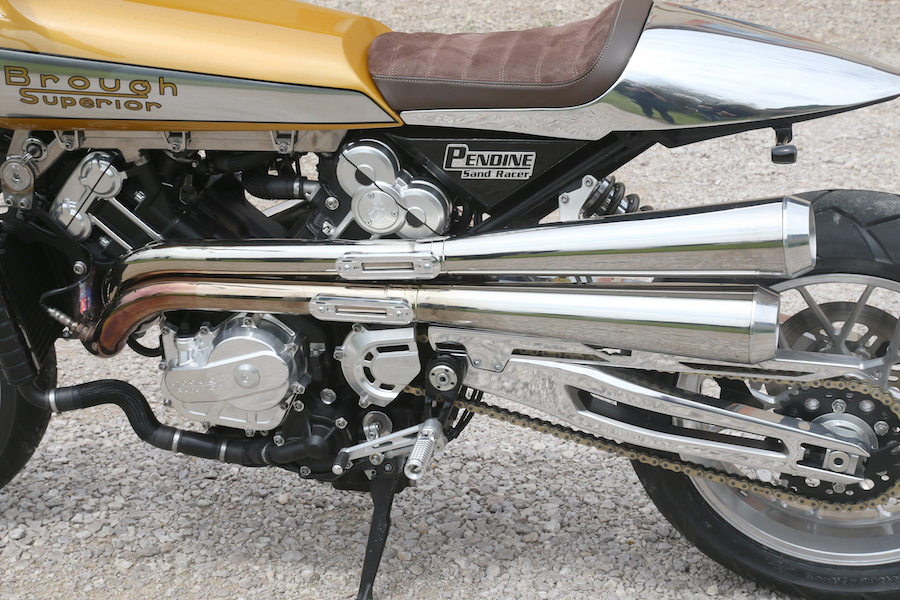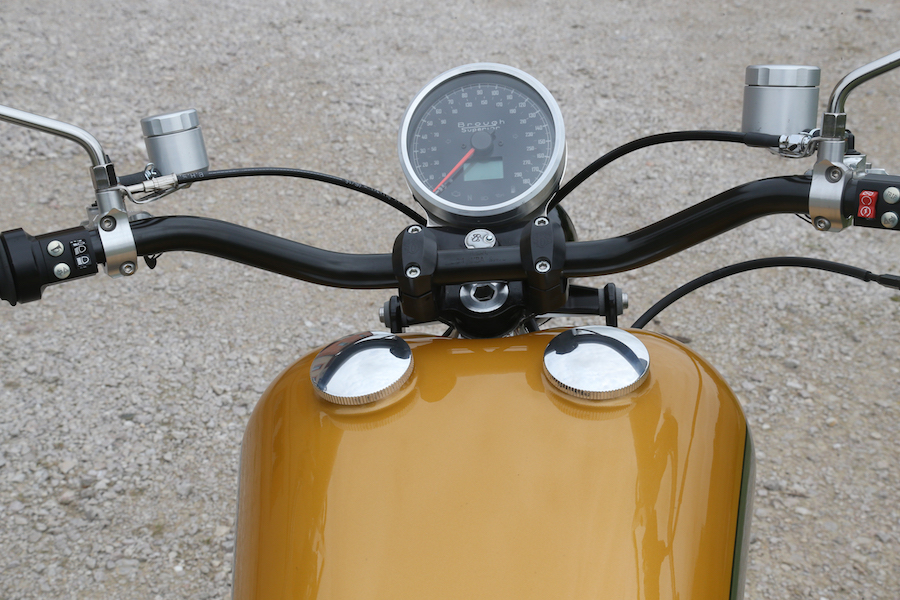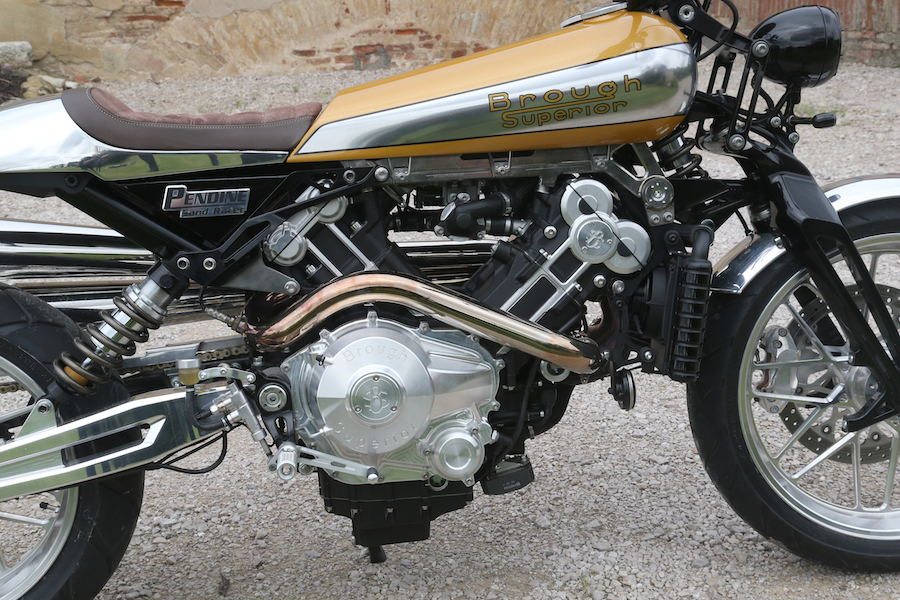Anglo-French collaboration turns out a gloriously unique V-twin sportsbike. This is the Entente Cordiale 2.0
Three years ago production began of the first new performance roadbike for 75 years to carry the iconic Brough Superior badge. It was the all-new SS100, which made its public debut at the 2013 Milan Show to mark the 90th anniversary of the model’s introduction.
It came after the owner of the brand, Austrian-based Brit Mark Upham, licensed famed French-based designer Thierry Henriette to turn his vision into reality.
Henriette and his business partner, Albert Castaigne, relaunched Brough Superior as a manufacturer of high-performance, high-quality and inevitably high-priced motorcycles that, despite their retro styling, employ modern advanced technology, high-class materials and radical design.
Powered by a liquid-cooled V-twin (developed by the builders of the Kawasaki ZX-10R motors that power Jonathan Rea’s WorldSBK domination), production has gained momentum in Henriette’s ultra-modern 2000m² factory at Toulouse in the south of France.
All bikes from the born-again Brough outfit so far have been the SS100 sportsbike, whose retro styling clearly marks it as a descendant of the pre-war SS100, the world’s first superbike. But step two along Brough’s comeback trail was unveiled at EICMA last November – the Pendine Sand Racer that is as different from the SS100 as brie is from camembert.
Back in the 1920s the Pendine name was used on all Brough’s customer racebikes, constructed on a bespoke basis for wealthy customers and certified to be capable of over 110mph. Founder William Brough named his bikes after the 11km stretch of beach on the south coast of Wales known as Pendine Sands, a 1920s venue for Land Speed Records.
But the new Pendine is a very different type of bike. This exquisitely styled Sand Racer is in fact Brough Superior’s Monster to the SS100’s Panigale.
Using the same basic platform, Henriette has designed a totally different kind of bike than the SS100, a roadster rather than a café racer, which on its public debut at Milan had visitors salivating over the flowing lines of its stacked twin exhausts.
Although powered by a subtly remapped version of the same engine, the Pendine costs five per cent less than the SS100 – it will retail in France at 60,000 Euro ($95,000), including 20 per cent tax, when deliveries begin this September after Euro 4
compliance has been achieved, says Henriette, against 63,500 Euro for the SS100.

The Pendine’s other significant differences include different-diameter wheels compared to the retro-style pair of 18-inchers on the sportsbike, though steering geometry remains unchanged. On the Pendine, these ultra-lightweight CNC-machined 16-spoke forged aluminium items feature a 19-inch front shod with a skinny 120/70R19 Continental ContiAttack 2 on its 3.5-inch wheel, and a 170/60 cover on the 17-inch rear’s 4.5-inch rim.
The brakes are also quite different, even though they’re still made by local specialist Beringer. But instead of the two pairs of smaller-diameter 230mm twin discs up front on the SS100, on the Pendine there’s just a single 320mm disc, gripped by a radial four-piston caliper, coupled with a 230mm rear stopper. ABS will be fitted for Euro 4 compliance when this is signed off later this summer.
As the person who had the bright idea of introducing Upham and Henriette to each other in 2010, my ongoing reward was to become the first outsider to ride the new Pendine, in this case an unbelievably tasty piece of mechanical eye candy in the form of a pre-production prototype painted in a sparkling sandy shade.
Throwing a leg over the single seat – still no passenger space on any Brough Superior ever built – showed at once how different this is from the SS100. The seat is 25mm lower at 805mm, with the result that you feel much more a part of the Pendine, seated lower and within it rather than on top as you do with it’s sibling.
There is a quite different shape to the one-piece handlebar, which on the Pendine has its grips raised and pulled back, thus delivering a more upright and even spacious stance, which makes riding the bike in traffic not only easier but more enticing.
If you can forget for a moment the price of the bike you’re riding – and I tried, I really tried! – this would have to be one of the most satisfying streetfighters I’ve ridden in a long time.
The fat rubber grips feel meaty to hold, and help convey a sense of substance to the whole bike, which also has several really neat detail touches – even the key is a visual work of art.
The 88-degree V-twin is now more refined and more rideable than the pre-production SS100 I rode three years ago at the start of its development. There’s still plenty of poke and enough power to thrill, but it’s the way it is delivered that is better than before – and it was already pretty good!
The full feature in AMCN Vol 68 No 03
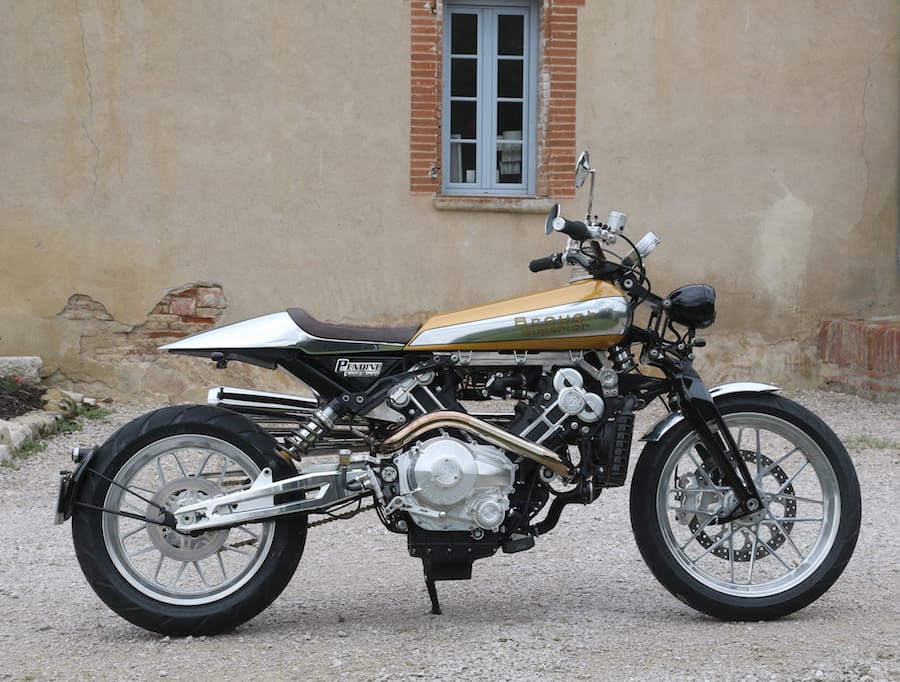
TEST Alan Cathcart
PHOTOGRAPHY Kel Edge
